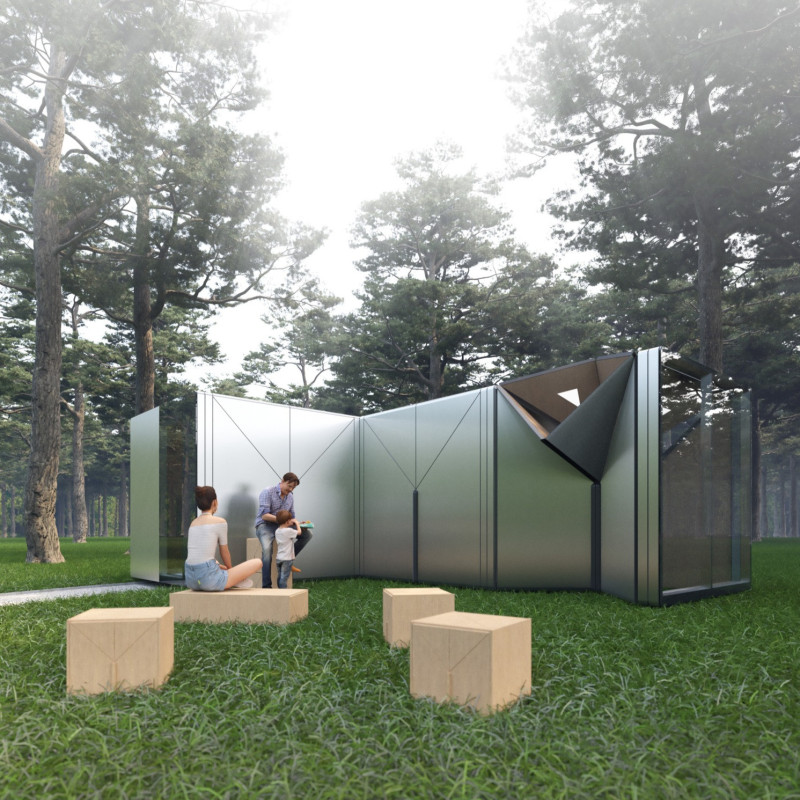5 key facts about this project
The mobile folding home design introduces a fresh solution for flexible living. It is aimed at families who desire a compact, transportable home that does not compromise on comfort or functionality. The project embodies a modern approach, allowing residents to enjoy mobility while having access to essential amenities. The design focuses on modularity, creating a living space that can adapt to various needs and lifestyles.
Core Module
At the heart of this design is Module A, which serves as the main component of the home. It houses important features such as rechargeable batteries, rainwater collection, filtered and unfiltered water tanks, and wastewater treatment systems. This module also includes a toilet and storage space for foldable furniture. Such an arrangement ensures that residents have everything they need for daily living within a compact footprint.
Portable Connectivity
Modules B and C take the form of portable cubes that make transportation straightforward. Families can easily move these modules using standard vehicles like cars or pick-up trucks. The ability to change configurations allows for customizable living arrangements, whether catering to a couple or a larger group. This aspect of mobility is essential, particularly for those who wish to change their environment while maintaining comfort.
Energy Efficiency and Comfort
Energy efficiency is a central feature of the mobile folding home. Solar panels installed on the roofs of Modules B and C provide power to charge the batteries in Module A, minimizing reliance on external energy. Inside, electric heating and cooling systems ensure that the living space remains comfortable throughout the year. This focus on energy use and sustainability reflects a broader trend towards environmentally conscious living.
Multifunctional Interior
The interior design incorporates multifunctional furniture to enhance the utility of available space. Modules D and E serve multiple purposes, with Module D functioning as a stool or coffee table while Module E can be used as a bed or table. This adaptable approach to furnishings makes the most of limited space, ensuring that every element has a role in daily life.
The design demonstrates a thoughtful balance of modular components, energy efficiency, and flexible use of space. Each element contributes to a dwelling that can adjust to the needs of its occupants. A significant detail is the clever folding mechanism that allows the floor to stand vertically when not in use, reducing the home’s footprint and enhancing convenience during transport.



















































